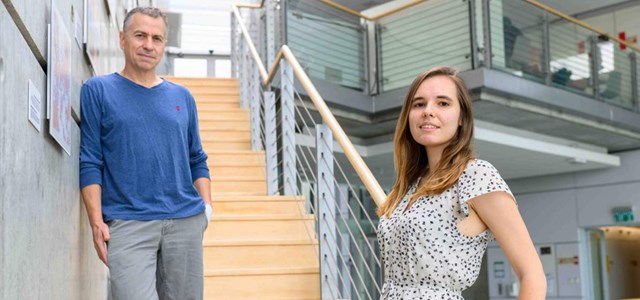
At the height of the coronavirus pandemic, pharmaceutical company Merck received emergency, fast-track approval from the USDA for a new drug called molnupiravir, which tricks the SARS-CoV-2 virus into mutating so quickly that it kills itself off. One social media user’s logical response to the news got the attention of Prof. Yitzhak Pilpel in Weizmann’s Molecular Genetics Department: Could humans encounter more dangerous strains of coronavirus and end up paying a heavy price for this innovation?
Prof. Pilpel wondered: Is it possible that the drug has a very serious flaw that was overlooked? Working with doctoral student Gabriela Lobinska from his own laboratory and Prof. Martin A. Nowak from Harvard University, Prof. Pilpel began looking for ways to deal with the challenge of developing a new kind of drug safety test for antivirals, antibiotics, and more.
The researchers suggest three possible ways of testing for evolutionary safety. The first is to make the test part of the clinical trials. While this is a thorough way of identifying interactions, it may be too complex to perform. The second system of testing for evolutionary safety could be conducted in the laboratory and is expected to provide a much fuller picture of the subsets of mutations.
Prof. Pilpel’s team, however, focused on the third research paradigm: a theoretical test using a mathematical model to present a comprehensive picture of a virus’s lineage and how it responds to medical treatment. This type of test enables scientists to formulate a template to analyze tens of thousands of possible mutations in the coronavirus’s genome. The goal was to assess the respective likelihood of three possible situations: 1) a mutation that is beneficial for the virus and detrimental to humans, 2) a mutation that is lethal for the virus and beneficial for us; and 3) cases where the mutation does not lead to any significant changes in the virus’s genome.
The findings showed that Merck’s drug could be a double success: it treated coronavirus, and might also be good for humanity by lowering the risk that new worrisome strains would emerge. The secret is in the numbers.
The team's findings confirmed the number of mutations that are good for the virus but bad for humans are of limited significance, meaning evolutionary risk with this drug is minimal. At the same time, it is important to take into account the strength of the patient’s immune system and the timing of the start of treatment, which also have a major impact on evolutionary safety.
“We urge regulatory bodies and pharmaceutical companies to incorporate evolutionary safety concerns into the development and authorization [of] new drugs,” the researchers say. They believe an improved understanding of accelerated mutations will be extremely valuable “in the battle to eradicate diseases,” and could more accurately “ensure patient recovery but will also be safe for the entire population.”
